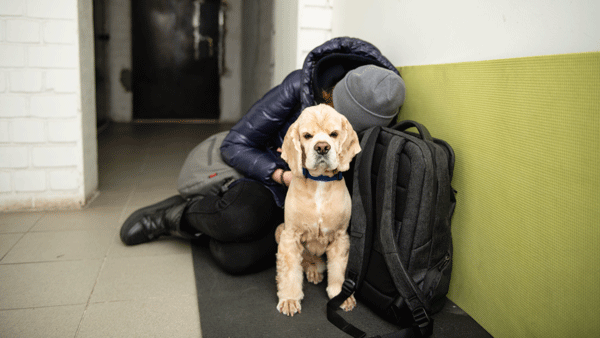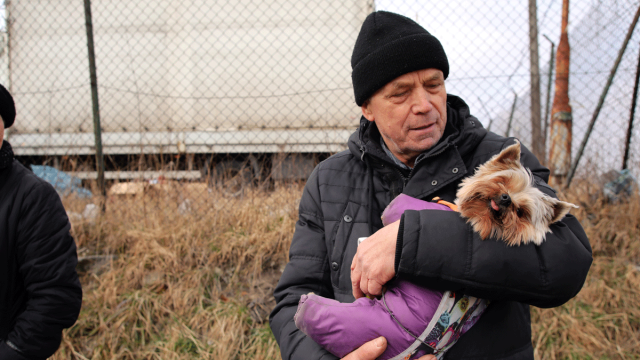There’s an old saying that you can judge someone’s character by the way they treat children and animals, for those are the ones who cannot care for themselves. By any measure, the Russian invasion of Ukraine that began Feb. 24 is atrocious, but for children and pets, it is particularly perilous. As millions of Ukrainians flee their country—now a warzone—some have found a way to bring along their pets. For others, leaving them behind was their only heartbreaking option.

TODAY reports that Estonia is welcoming refugees and their cats, dogs and even a few parrots, according to Hellika Landsmann, Tallinn City Government Chief Specialist. Her job involves supporting the local animal shelter, and she also volunteers for the nonprofit Estonian Society for the Protection of Animals, fostering more than 100 dogs and cats over the years.
“When the animals get here, they are really hungry and they haven’t had water in days because people don’t know how long a time they have to travel,” she told TODAY. “At the moment, all our hotels and all refugee apartments are ready to help. … We understand that it’s not easy and the best way to help is to keep the family together as much as they can.”
Refugees fleeing the Russian military often don’t know how long they’ll be traveling, or what precise route they will take to reach safety. As a result, NBC News reports that the streets are strewn with personal effect that—at some point in the journey—become just too cumbersome, or unnecessary, to take along. But the pets? They remain by the sides or in the arms of their owners.
But many pets remain in Ukraine because they were separated from their families, or because they cannot be evacuated from shelters and face bombing by the Russian military. One Ukrainian animal shelters, Sirius, is housing more than 3,000 animals, trapped near the capital of Kyiv. Staff and citizens are calling for a “green corridor,” or a safe passageway to transport pets out of the country. But time has shown that despite what Russia may agree to, there will be no safe passage for anyone, including pets, out of Ukraine during this invasion.
“Every time when Russia is saying, ‘Yeah, we will let you leave,’ it’s bullets and nobody’s going anywhere,” Landsmann said. But in staying, pets and their caretakers face ever more danger. Larger organizations are coordinating support for local animal shelters, but by attempting to help, many volunteers become targets, themselves. 26-year-old Anastasiia Yalanskaya and two other volunteers were shot and killed by Russian troops after delivering food to a shelter in Bucha, which is less than 20 miles outside of Kyiv. The shelter had been without supplies for three days.
“I know at least a few animal helpers or shelter volunteers who got shot because they want to visit shelter animals and wanted to bring some food to them,” Landsmann said. “And they were just shot. … The war is not over and it’s getting worse every day.”











